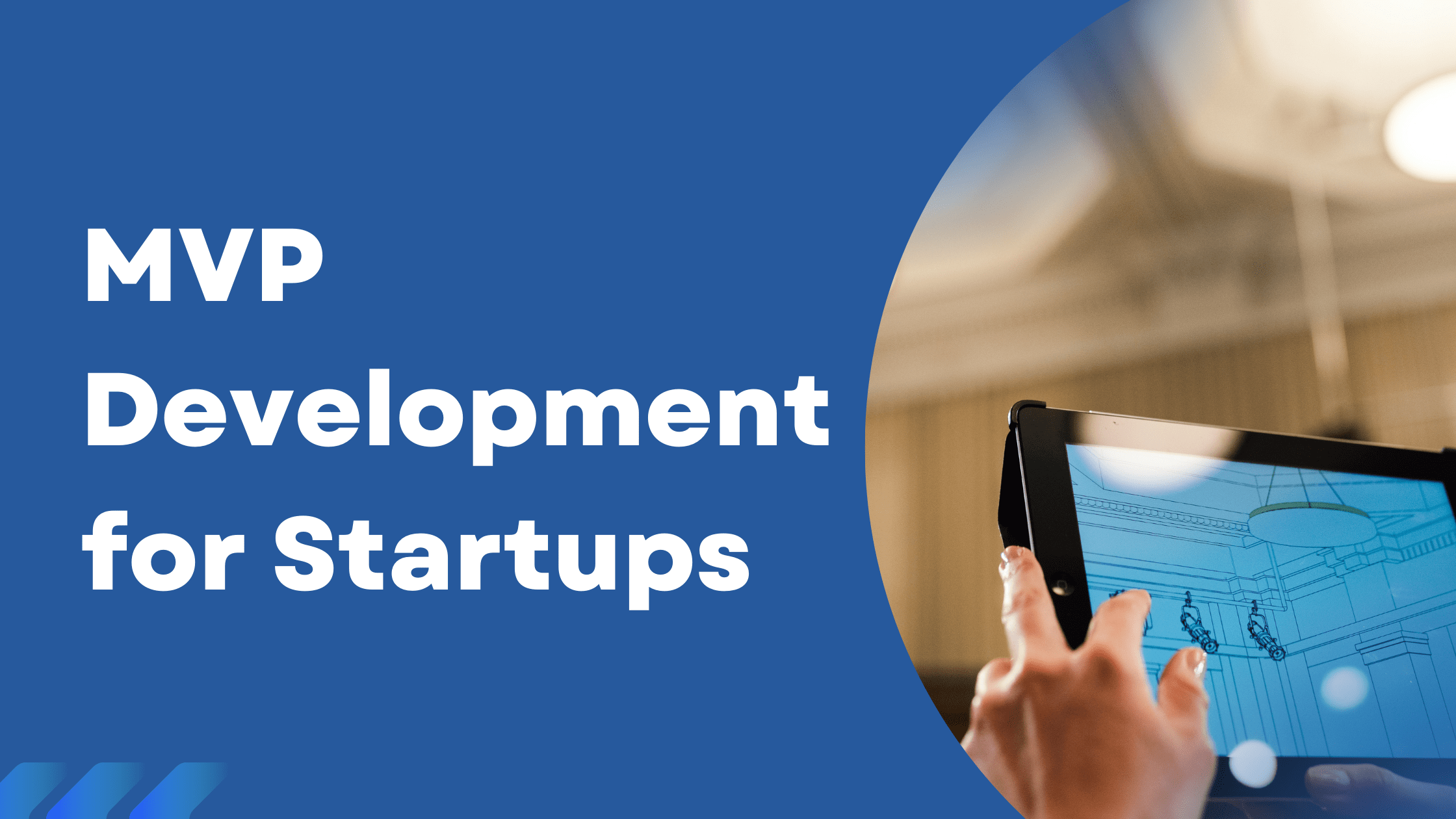The world is being taken over by technology. Taking a quick look around, we can see that digitalization is gaining traction. In light of the current pandemic, global businesses are looking to automate their processes and replace humans with machines while providing online, technology-based services to their customers and this is where digital products enter the picture. Read on full guide to MVP Development for Startups.
Every start-up begins with a great vision and a great idea; however, the journey from idea to launch is a difficult and lengthy process. And, in these days of increased competition, consumer demand, and technological innovation, businesses must launch market-ready services and products that are more efficient and cost-effective.
minimum Viable Product (MVP) development is a product management concept for start-ups that works extremely well when launching a new product. It helps to validate your assumptions as you continue to build, measure, and learn the product
The MVP methodology aids in the development of a more structured, dependable, agile, and cost-effective approach to acquiring genuine customer insight.
What is MVP Development for Startups?
The MVP is a bare-bones version of your product that has been tested against market standards. This method of development allows your team to validate or invalidate product assumptions. It will assist you in understanding how your target users react to and experience the core functionality of your product.
MVP development for startups follows a build-measure-learn cycle, allowing you to release a product that can be continuously upgraded as assumptions are validated. It makes it easier for businesses to understand what their customers want and to build future iterations of their app that better serve their targeted customers. For more information, visit Linkup Studio.
Advantages of MVP Development for Startups
With the rise in the concept of startups, MVP development for startups has become a new common among entrepreneurs. MVP development for startups is not a new term in the business world but it has now become more crucial than ever before. As there is a rise in digital products, it is important for businesses to be more customer-focused. There are many perks by incorporating MVP in your software products such as
- Vision Clarity
- Concentrate On Core Functions.
- Cost-Effective.
- Manage Resources.
- Assesses User Experience And Performance
- Allows For The Testing Of Business Concepts.
- Checking Market Demand
- Making A Monetization Strategy
- User Experience And Usability Testing
- Quicker Release
Guide to MVP Development for Startups
If you are an entrepreneur and want to incorporate your idea with MVP then here is a step-by-step guide to MVP development for Startups.
- Analyze the Market 🙌
Before launching any product, it is critical to determine whether or not the product will be successful in the market. It’s all about testing market demand to see if the MVP idea will succeed or fail. You cannot invest your entire portfolio in the market if you do not understand this.
As a result, an MVP is the only solution that can assist you in testing the same and moving forward with the idea. The findings can then be used to measure and pivot MVP performance.
- Pitch Your Idea Critically 💡

Creating an MVP with a lot of features without a good reason often leads to failure and capital loss. What does your product provide to your customers? How can it help them? Why should they buy your product? These are some important questions to consider to better express your idea.
You should also be very clear about your product’s total cost. As the MVP clearly states, when introducing value to people, first outline them, and then develop your MVP based on that.
- Design Process and User Flow ✍
To define your user flow, you must first define the process stages, which require you to explain the steps required to achieve the main goal. Your priority should be on basic tasks rather than features like finding and purchasing the product, as well as managing and receiving orders.
Choose the most appropriate MVP approach based on the idea to be validated and the available resources at this stage.

No-Product: This is a no-coding approach that requires no technical knowledge because the creation of a product is still a visualization idea.
Product-based MVP: This type of MVP ensures that the primary concept of the future product is delivered.
MVP with a single feature: This is designed to deliver a single feature.
MLP: MLP focuses on enhancing the MVP app’s beauty by improving UI/UX with appealing visual appeals and micro-interactions.
- Project Features

Before you begin building the MVP, make a list of all the features you want to include in your product. Sort all of the product features into three categories: high, medium, and low. Define the scope of the first version of the product and create an MVP. You can even create an MVP’s prototype if you want to see how your future product will look.
- Roadmap For Future Releases
After you’ve listed all of the main features and assessed the market’s needs, you can begin developing your MVP. Always remember that a prototype is not of lower quality than a finished product. As a result, it must be simple to use, engaging, and meet the needs of the users.

These mapping techniques assist you in determining the areas where you have the greatest potential to add value. As a result, you can concentrate on these areas while leaving the less important points on your product roadmap for future releases.
- Build, Measure, And Learn

The final product must be tested after it has been completed. After launching the MVP, thoroughly review everything. Collect feedback from your target audience. With customer feedback, you can easily determine if the product is marketable. Make your product simple, and don’t forget to ask your customers what extra features they want in the product.
Ending Notes
The success of any new business is frequently dependent on the creation of a minimum viable product. Instead of complicated development, MVP software development is a sure-fire strategy for testing your idea on the market, which reduces the risk of investing money in a product that your target audience is not interested in.
MVP development demonstrates a clear goal of problem-solving by identifying real pain points in businesses and then focusing on offering viable and optimized solutions.
You simply need to have brainstorming, planning, designing & developing testing, and advertising for the product in a short period. It will increase the value of your project to targeted customers.

